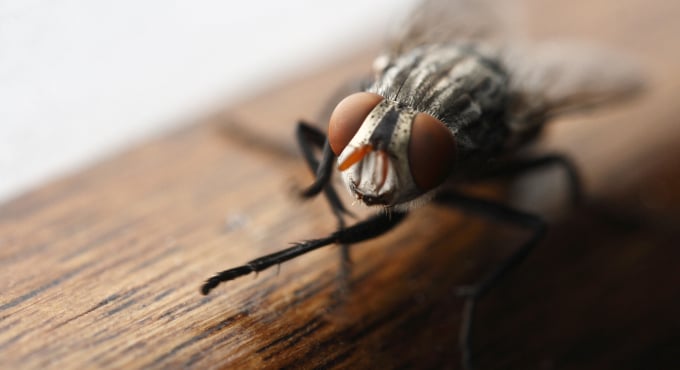Controlling Houseflies
controlling houseflies in the homeThe housefly, is seen as overall and lives in nearness to people. Since houseflies can convey numerous sicknesses of people and homegrown creatures, it is vital to keep their populaces low. Understanding their propensities and life cycle can assist you with disposing of the most flies at the least expense for you and the climate.
The housefly is a nonbiting fly estimating around 1/4 inch long. Grown-up houseflies have two wings and four longwise dark stripes on their backs. The mid-region ordinarily seems checkered
Houseflies are frequently mistaken for tissue flies and stable flies. A tissue fly has just three stripes on its back, and the tip of its mid-region is generally red. The steady fly feeds on blood and its mouthparts distend from the front of its head.
Life cycle
Houseflies live for as long as 3 weeks and are dynamic during the hotter piece of the year. A grown-up female stores 50 to 100 eggs all at once and around 500 eggs over her lifetime. The eggs are kept in spoiling natural matter. They hatch after around 12 hours and the hatchlings, or slimy parasites, feed on the spoiling natural material. A worm goes through three larval stages and afterward shapes a pupa, or cover. The grown-up fly rises up out of the cover. Houseflies commonly create from egg to grown-up in 10 days or less.
Control
Three kinds of control techniques are utilized to smother houseflies: social, organic and substance. Utilizing every one of the three methods is ideal.
Social control
Social control implies changing the climate to keep houseflies from creating. The best social technique is to appropriately discard any natural matter, like vegetable or other food results, where houseflies could lay eggs. Place these materials in trash containers and tie the packs safely. Eliminate all food deposits and clean your trash bins week after week.
Another social strategy is to keep houseflies out of homes and organizations by
keeping windows screened and entryways shut,
putting exhaust (blower) frameworks above entryways, and
introducing entryways that open and close precisely.
Tacky snares and bright light snares put around a home or business likewise can decrease housefly populaces. Hang tar strips (flypaper) in swarmed regions where there is practically zero air development. A guideline is to put one 10-inch strip per 1,000 cubic feet of room. Introduce the fly strips inside 6 feet of the floor in light of the fact that most fly movement is close to the ground. The strips are powerful for up to around 90 days or until totally covered.
Introduce light snares where they shouldn't be visible to flies outside to abstain from drawing in additional bugs to the structure. To make the snares more observable to the flies in a room, place them something like 15 feet from entryways and different entrances and in hazier regions from splendid lights and daylight. Place the snares something like 5 feet from food readiness regions to limit the gamble of food tainting. Keeping up with the traps is significant. Supplant the bulbs each spring not long before the pinnacle time of fly movement on the grounds that more established bulbs lose their engaging quality to bugs. Additionally wipe them out routinely in light of the fact that dead flies act as nourishment for different bugs.
Organic control
Parasitic wasps and fire insects stifle housefly populaces normally. To utilize this type of regular irritation control, you can arrange fly pupae from insectaries in Texas or across the US.
The pupae, which are now contaminated with the parasites, can be spread around homes or close where houseflies are creating. Place the pupae in regions out of direct daylight where they won't be stepped on.
Parasitic wasps don't hurt individuals or creatures. They search out and kill youthful houseflies. Be that as it may, parasitic wasps get some margin to work, and they alone won't dispose of a housefly populace. Utilize this strategy in blend with different techniques.
Substance control
At the point when essential, insect poisons can assist with stifling housefly populaces. Fly lures, like QuickBayt® and Brilliant Malrin®, are typically sugar-based and contain a compound that draws in the grown-up flies. Flies that feed on these goads are killed by the bug spray they digest.
Many shower pyrethroid-based insect poisons can smother houseflies in and around homes. These items can be bought at staple and tool shops. Make certain to peruse and adhere to the guidelines on all bug spray marks.




Comments
Post a Comment